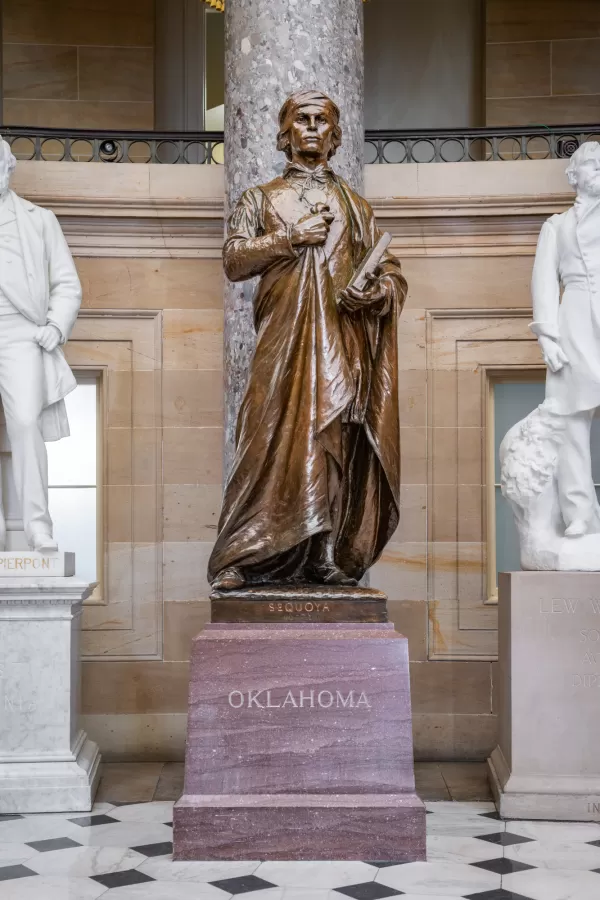This statue of Sequoyah was given to the National Statuary Hall Collection by Oklahoma in 1917.
Sequoyah, inventor of the Cherokee alphabet, was probably born in 1770 in the Indian town of Taskigi, Tennessee. He was raised by his mother as part of the Cherokee community, with no knowledge of the English language, and he became a hunter and fur trader. After being permanently crippled in a hunting accident, he developed his talent for craftsmanship, making silver ornaments and blacksmithing. Convinced that "talking leaves" would benefit his people, he began in 1809 to devise a table of symbols for the 86 sounds in the Cherokee language. The tribal council approved his work in 1821. Within a few years, thousands of Cherokees learned to read and write in their own language. His alphabet was also adopted by the missionaries.
In 1822 Sequoyah visited Cherokees in Arkansas, and in 1828 he moved with them to Oklahoma. He was active in the political life of the tribe, serving as envoy to Washington in 1828 and helping Cherokees displaced from eastern lands. The National Cherokee Council honored him with a medal, which he proudly wore for the rest of his life, and later with an annuity of $300, which his widow continued to receive after his death.
Sequoyah fell ill and died in 1843 while searching for a band of Cherokees who, by tradition, had moved into Mexico before the revolution. The location of his grave is unknown. His memory is perpetuated in the names of two species of redwood trees.

